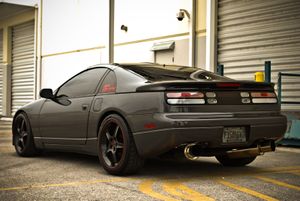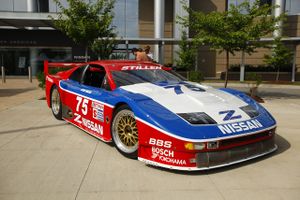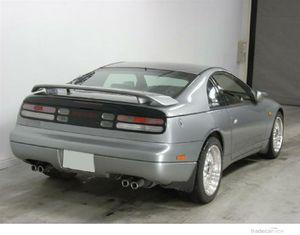Spoiler
Spoilers are automotive body parts, usually attached to the rear of a car to help reduce aerodynamic lift cars often experience at speed. They are almost always seen as an aesthetic piece, but functional spoilers are common in motosports.
Etymology
"Spoilers" are called such because their function is to "spoil" the airfoil effect created by the shape of a car moving at high speeds. The rear end of many cars tend to lift slightly at high speed, which can cause instability and even poor handling.
Spoilers should not be confused with wings, which, while often referred to interchangeably with spoilers, serve a different function and often look very different. While spoilers help reduce the lift caused by the airfoil effect, wings create downforce at high speeds. That is, if functional, they actually push down on the car at high speed, to help improve grip and handling. Such aerodynamics are extremely common in competitive motorsports and sports cars. Some car makers (such as Gumpert, referring to their Apollo) go so far to say that their aerodynamics create so much downforce that the car could theoretically drive upside-down in a tunnel.
Z32 Spoilers and Wings
Naturally aspirated cars never came (stock) with spoilers, at least from the factory. In the United States, some dealerships added spoilers to NAs as an option. Japanese cars got spoilers depending on their "version" (the Version S, for example, received a spoiler regardless of aspiration). From 90-93, the Turbo model included a "flushmount" spoiler. In 94, it switched to a "pedestal" type. In 1999 (Japan-only), the spoiler was once again redesigned.
The original flushmount spoiler is often regarded as the best looking spoiler for the Z, though many prefer different types or even a "wingless" (no spoiler) look. The original spoiler was made from a dense foam due to it needing to form perfectly to the shape of the hatch. Over the years, they tend to rot, crack, cause the hatch to rust, and peel. Nissan discontinued production of the original spoiler in the late 90's, and cheap fiberglass replacements became somewhat common. Many aren't the same design as the original (leaving the third brake like exposed, while the real spoiler replaced it) and fit poorly. Kuruma manufactures the "Zeta" replica wing, as does Powertrix, and these two are commonly regarded as the best fiberglass replacements for the original wing.
Cars with the (real) flushmount spoiler do not have the plastic third brake light strip, as the spoiler body covers and fills in the area where the strip would otherwise be. All cars 94+ did have the plastic TBL strip, as they either had no spoiler, or had a spoiler that mounted to the top of the hatch and did not fill in the TBL's mounting area.





